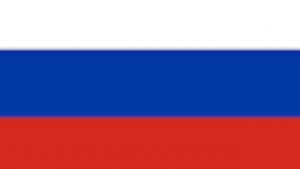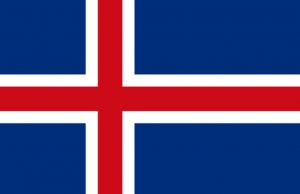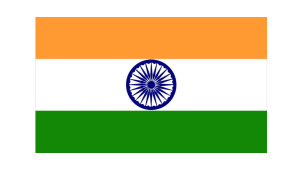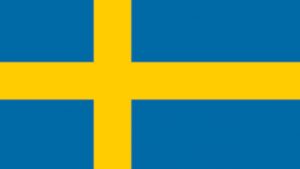Countries with the Worst Weather: The majority of dissatisfied people reside in the places with the worst weather around the globe. In addition to the undeniable link between outdoor recreation and contented, healthy families, there is the issue of waking up to bright skies only to arrive home drenched in rain.
As stated by weather predictors, “extreme weather is the new normal.” Yes, weather patterns are becoming far less predictable. “Normal” has always been irregular and unpredictable in the areas mentioned in this post, but perhaps things will get worse than they already are. This blog post will be looking at some of the nations that are well-known for having severe weather. Some of these countries have data indicating some extremely fascinating weather patterns.
Recommended: Countries Where Teachers Are Paid the Most
Top 10 Countries with the Worst Weather Condition
1 .The United Kingdom: The typical summertime temperature in the United Kingdom is between 9 and 18 degrees Celsius, which is relatively temperate and friendly to visitors from around the world. The likelihood of returning home wet despite leaving in the morning under clear summer sky should worry visitors, not the temperature. The British have a saying, “Don’t forget your brolly!” The word “brolly” simply means “umbrella,” and there is a good reason for this.

If you don’t bring an umbrella, you might experience what was mentioned in the paragraph above. In some regions, one might be able to determine the weather simply by gazing up as he leaves his house in the morning. However, in the UK, individuals simply pack their stylish umbrellas as they leave the house instead of attempting to forecast the weather.
2. Russia: It’s freezing in Russia. In Russia, the average temperature is -4.80 degrees Celsius. Yes, it can reach temperatures of 18.5 °C in the summer, but on average, it is only about -8 °C (18 °F) in January. Some regions of Russia have year-round snowfall. It’s crucial to note that this is a highly northern country, and that the weather is affected by the fact that although while it borders Eastern Europe and Asia, it also has oceans and seas on practically every side.

The Russian people are accustomed to their climate; it is uncommon to see people with amputations due to frostbite sustained after collapsing in the snow after a night of excessive drinking. But tourists must exercise greater caution because many Russians drink vodka to combat the bitter cold. It’s not good for your health if you pass out in public if you’re not used to drinking that much booze.
Keep in mind that some regions of the country experience year-round snowfall; even their architectural design takes this fact into account. Rain can fall at any time, thus most people dress in layers of heavy clothing.
Recommended: Most Dangerous People In the World
3. Canada: Canada, a nation in North America, is the second-largest nation in the world in terms of land area. The frigid winds coming in from these vast bodies of water, which almost fully encircle Canada, contribute to the bizarre weather. The weather in Canada is very bizarre; there, it is typically extremely cold; in the coastal regions, the average temperature is close to 15 °C. For almost half of the year, the ground is frequently covered in snow in the country’s central regions.

In the house, if one leaves a cup of tea out on the table in the winter, it will freeze before dawn. In addition, the persistent snow and rain can make life miserable because it is difficult to find outdoor activities. Spending a lot of time alone indoors might make people depressed. Although this is a wonderful place, the weather frequently makes it difficult to appreciate it.
4. United States: The United States and Canada share a sizable portion of land in North America. It comes as no surprise that it experiences weather similar to its neighbor. The United States is surrounded by vast bodies of water on both its east and west sides, stretching from sea to shining sea. These add variety to the weather there.

On the same winter day, the temperature in the United States can range from 21.5 °C in some locations to -3.0 °C in others. Despite the fact that Americans prefer to measure temperature in Fahrenheit, which equals 36.52°F, February’s average temperature is 2.5°C.
In the United States, where it is mild in Hawaii, chilly in Alaska, and warm in Florida, one can experience a wide range of climatic conditions. The US is frequently hit by hurricanes, which can result in significant destruction, but there are mechanisms in place to provide early warnings and guidance on what to do, minimising the impact, at least in terms of human life.
Recommended: Most Lucrative/Profitable Courses To Study In The World
5. Philippines: One of the nations in Southeast Asia is the Philippines. It is an archipelago with about 7,000 islands in it. In this instance, the western Pacific Ocean encircles the island. Philippines is a country where there is constant wind coming in from all directions.

The humidity in the Philippines is a problem; even for important business meetings, people must wear casual, light clothing because it can get extremely warm. When this happens, people start to feel uncomfortable because their skin starts to feel sticky.
The Philippines can experience surprise rain just when tourists believe they have learnt everything there is to know about the country’s weather. In this country, it’s not uncommon for water to fall from the sky even when the sun is shining brightly.
In this country, the weather can appear to be a clear, beautiful day but turn out to be a rainy, miserable evening. Although it can get as chilly as 3°C, the average temperature in this nation is 27.1°C. When a typhoon is poised to make landfall, there is typically sufficient warning; normal weather is already problematic enough without having to worry about extreme weather.
6. Iceland: Iceland is Europe’s northernmost country. There is a lot of land and not much ice, despite the name. Iceland’s location in the North Atlantic Ocean as an island is what makes it unique. No natural boundaries exist in the country, which is also not very large.
As a result of the water blowing in from the ocean, the nation receives a lot of rainfall. Even though Iceland is a country that is so far north, it is not as chilly as one might anticipate.

Iceland’s summertime average temperature ranges from 10 to 13 °C, while its wintertime average hovers around 0 °C (32 °F). This is so that the freezing conditions that would otherwise exist are cancelled out by the warm currents that come in from the ocean.
Visitors should be more worried about the periodic rain than the cold, which should not be their main concern. Umbrellas aren’t much use when the winds are causing the rain to appear to be falling randomly.
Recommended: How To Become a Successful Entrepreneur
7. India: India is a nation in south Asia and the world’s most populous as well as the seventh-largest nation in terms of land area. India has a fairly large land area, and the terrain and height vary somewhat. For instance, the country’s east faces the Bay of Bengal, which borders the Andaman Sea, while its south-western region borders the Arabian Sea.

As a result, the enormous bodies of water blow a lot of humid air into India. These make sure that the nation receives a plenty of rainfall. India receives 115 centimetres of rain year, which falls from June to November, while its heaviest months are October and November. The average yearly temperature in India is roughly 26.9 °C. Even in the winter, it is not too chilly; in the northwest, it is about 10-15 °C (50-59 °F), while in the southeast, it can even be as hot as 20-25 °C.
8. Greenland: Located in northern America, the island country of Greenland was formerly a part of the Kingdom of Denmark. It is the biggest island in the world and has a particularly unusual climate due to its extreme northern location. Greenland isn’t extremely green; it’s largely white with snow and ice. It might be referred to as a frozen tundra, but the locals would find that offensive. Three-quarters of Greenland are covered by the only ice sheet that is permanent outside of Antarctica.
Due to its proximity to water on all sides, Greenland experiences a lot of precipitation, which is brought on by the air that is packed with moisture. In the hottest summer months, Greenland’s average temperature is 5.6 °C (42 °F), yet in the coldest winter months, it is typically about -18 °C (-4 °F).
It takes great courage to travel to Greenland; before making such a journey, one needs to first experience his own country’s colder regions to get used to life there.
Recommended: Countries with the Worst Road Quality
9. Finland: Estonia, Sweden, and Russia all share a border with Finland, a Nordic country in northern Europe. The shorelines of the Gulf of Finland and the Gulf of Bothnia are located in Finland. The Arctic Ocean and the Norwegian Sea, on the other hand, have a substantial impact on this country’s climate. Because Finland is one of the world’s most northern nations, it is essential to wear layers of clothing. The nation features a range of topographies, including some mountainous regions. In addition, the nation has some sizable, densely forested landmasses, which raises the likelihood of good weather.

Glaciers that originally surrounded this area have since melted. Even so, the summertime temperature only reaches 5.0 to 7.5 °C (41.0 to 45.5 °F), making it still extremely frigid. Winter temperatures range from 0 to 4 °C, or 32 to 25 °F. Finland experiences 600 to 700 mm of annual precipitation. Going to Finland means preparing for both the cold and the possibility of getting wet.
10. Sweden: Sweden is a Scandinavian country in northern Europe. Due to its vibrant culture and mysterious local traditions, the nation is very fascinating. But northern Europe is normally a rather chilly place. It may be necessary to endure some incredibly difficult circumstances in order to appreciate the culture.

Sweden’s average January temperature is -3°C (27°F), and its generally temperate summers can reach temperatures of 15 to 25°C. Sweden experiences between 500 and 800 mm (20 and 31 in) of precipitation yearly, which is much less than the global average.
Recommended: Hardest Musical Instruments To Play and Learn
Conclusion
In conclusion, our travels to the countries with the worst weather have made us more aware of the great variety and difficulties that Mother Nature can bring. These countries serve as evidence of the strength and irrationality of our planet’s climate. Each country’s weather may be challenging, but it also offers opportunity for resiliency and beauty that is all its own. We should keep in mind that weather, no matter how harsh, is a crucial component of our world’s colourful tapestry as we travel the globe.

Edeh Samuel Chukwuemeka, ACMC, is a lawyer and a certified mediator/conciliator in Nigeria. He is also a developer with knowledge in various programming languages. Samuel is determined to leverage his skills in technology, SEO, and legal practice to revolutionize the legal profession worldwide by creating web and mobile applications that simplify legal research. Sam is also passionate about educating and providing valuable information to people.